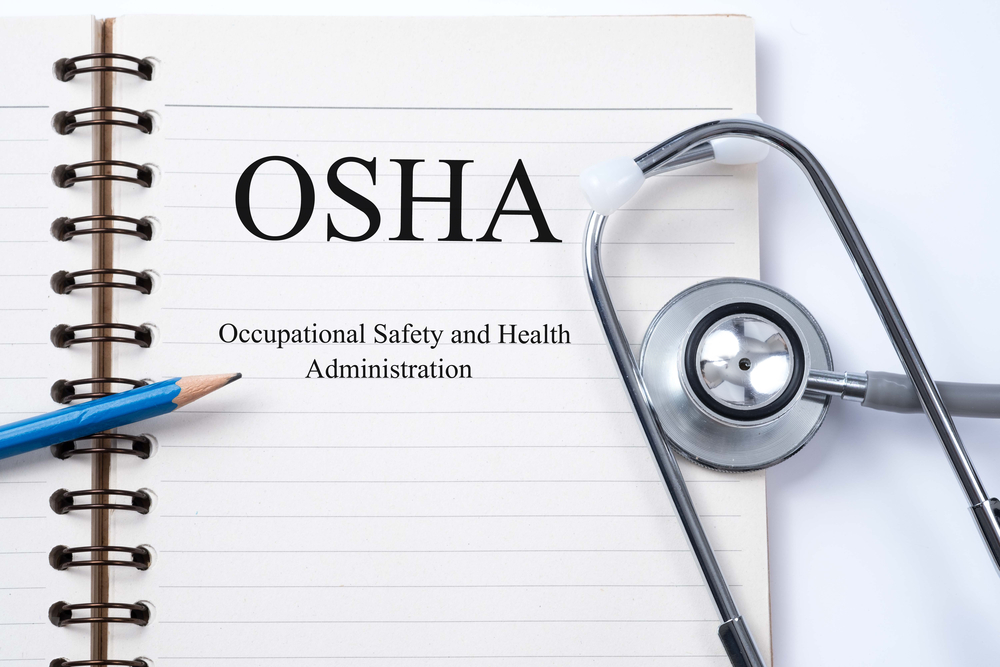Do you worry about following Occupational Safety and Health Administration’s standards? As a business owner, it is necessary for you to know what is relevant to your business and to follow all regulations and compliance training. Each year OSHA releases statistics concerning their most cited violations. Learn from their statistics to stop these abuses in your office and to better protect your workforce.
#1 Fall Protection in Construction
Fall protection is required for businesses of all types including the proper supervision of employees and protecting them when on the edge of walking surfaces. The most troublesome areas are residential construction, unprotected borders, and roofing.
#2 Hazard Communication for General Industry
This standard covers chemical hazards in the workplace, and you don’t need to work in a highly-chemical place to follow the rules. All workers need to know about chemical hazards, be educated concerning operating, and even understand shipping labels. Know your business’ role in implementing a hazcom program, training, and maintaining standards.
#3 Scaffolding Requirements and Construction
Do your workers use scaffolding on the job site? Not only does it need to be designed by a qualified person, constructed according to design, and loaded with an appropriate amount of weight. The third most common OSHA violation involves scaffolding not protecting employees from falling to a lower level when at least 10 feet above that level.
#4 Respiratory Protection
The health of an employee cannot rely on preventative measures like masks but also on an active respiratory protection program. Missing any requirement of a respiratory protection program causes a citation. Be sure your business includes everything from worksite-specific procedures, respirator options, employee training, and more.
#5 Lockout Procedures
After decades of injury and lack of care for the employee base, machines finally caught up with the world of health and safety in the workplace. Not only do your employees need to disable machinery and equipment but they all need training on this function. A machine shouldn’t start up when someone is fixing it!
#6 Powered Industrial Trucks
This regulation covers trucks and forklifts operated on the job site. While it is easy to assume an employee has prior experience with equipment, new training sessions are required. The highest number of violations pertaining to the safe operation of powered industrial trucks followed by an evaluation for operators occurring once every three years.
#7 Ladders
It doesn’t take a considerable amount of training to know that ladders are a liability in the workplace. When you need to use ladders at work, there must be portable ladder access, ladders are only to be used for their designed purpose, and you should never be using the top step. Ladder violations exceeded more than 2,500 violations in the 2016 fiscal year.
#8 Machine Guarding
Protecting people from incidents of machine operation keeps your staff safe and keeps everyone at work! The most significant cause for violations in this category is not providing at least one method of machine guarding to the operator of the device.
OSHA Prevents Worker Death
This organization is essential to the prevention of private sector worker deaths. The top causes of worker deaths were falls, getting struck by an object, electrocutions, and getting caught or compressed. If you work to meet all standards and correct the most common areas of violation in your sector, your company will maintain the reputation it deserves.
Education Yourself and Your Staff
When it comes to OSHA, the best way to avoid violations is to educate yourself and your staff on standards. Every employee deserves to work in a safe location without concern about health, safety, or workplace hazards. Protect yourself, keep your team safe, minimize violations, and prevent medical concerns with education on OSHA. Knowing the top violations helps you avoid violations! Take preventative measures to stop these abuses for the safety of your office and to avoid fines from OSHA.


